Baroque, describes a complex idiom. The style originated in Rome and embraced painting, sculpture, and architecture.
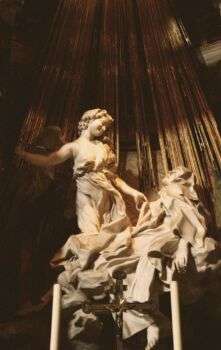
Image source: https://search.creativecommons.org/photos/c2c8e79b-3432-4cd9-a3c8-eaf3e5b505df by vharjadi
Roman Baroque: When and Why?
Baroque architecture originated in the Counter-Reformation when the Catholic Church launched an emotional appeal to the faithful through art and architecture. In the 17th century, Rome became a statement of Catholic majesty, and expressed this triumph through the arts. Baroque architects, artists, and urban planners gave power to the ecclesiastical traditions of the city. Further, Rome became the capital of the European art world.
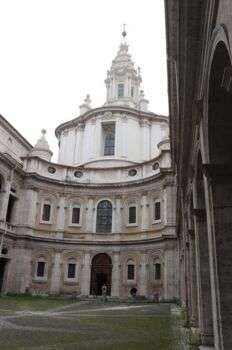
Image source: https://search.creativecommons.org/photos/a823daf7-8dba-4ef8-8d86-defff2085f42 by rjhuttondfw
Famous Baroque Artists
To the papal reigns of Urban VIII, Innocent X, and Alexander VII. The three main architects of this period were sculptors Gian Lorenzo Bernini, Francesco Borromini, and painter Pietro da Cortona. Each of them developed their own architectural expressions. Ceilings and vaults of palaces and churches were a communication medium to fulfill propagandistic goals through different ways of expression.
- Baroque painting: illustrated key elements of Catholic dogma
- Baroque sculpture: marked by a similar sense of dynamic movement
- Baroque architecture: designed to be spectacular
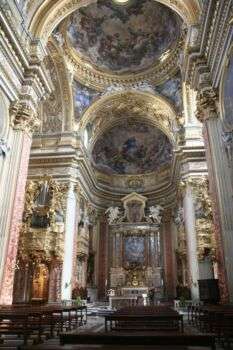
Image source: https://search.creativecommons.org/photos/2d2fe455-275a-4d5a-bba9-6c125705801e by Fagerjord
Gian Lorenzo Bernini
Gian Lorenzo Bernini dominated Roman art in the 17th century. Under Pope Urban VIII, Bernini gained popularity after he was commissioned to build a symbolic structure over the grave of St. Peter in St. Peter’s Basilica in Rome. The immense gilt-bronze baldachin represents the first truly Roman Baroque monument. Further, it perfectly proportioned, and as tall as a four-story building. The moving upward to the crown with its dark colors and burning gold, resembles a living organism. It is an unprecedented fusion of sculpture and architecture.
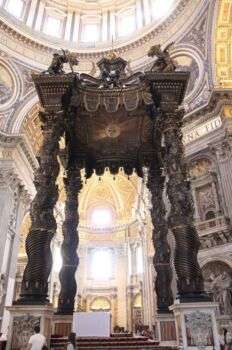
Image source: https://search.creativecommons.org/photos/ec54a0c1-a3a7-4c40-8777-f9fd3ba2a768 by Gary Lee Todd, Ph.D.
Francesco Borromini
Borromini worked with Bernini to realize Barberini Palace and the Baldachin of Saint Peter’s Basilica. Later on, he had an independent commission of the church of San Carlo alle Quattro Fontane. The building is considered a masterpiece of Roman Baroque architecture. For the facade, Borromini used two orders: one upper and one lower. He featured a succession of concave surfaces on the lower one and, on the top, there are three concave parts and a newsstand convex. The facade was finished with an concave, oval medallion giving a sense of dynamism.
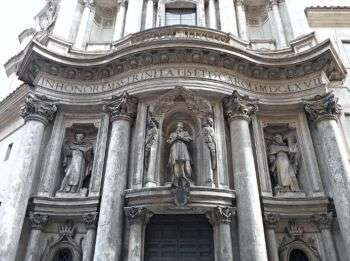
Image source: https://search.creativecommons.org/photos/cca96206-6499-419e-8d70-96e7d22e617d by Carlo Raso
Borromini also worked on the construction of San’Ivo alla Sapienza. It is circled with the alternation of concave and convex-ending cornices, leading to a dome decorated with linear arrays of stars and cherubs. The plant forms a six-pointed star. Sant’Ivo alla Sapienza fused excesses from Baroque and some forms of rationality to create an innovative concept.
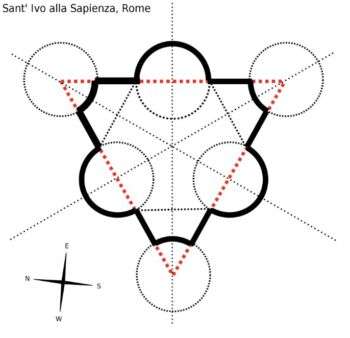
Image source: https://en.wikipedia.org/wiki/Sant%27Ivo_alla_Sapienza#/media/File:SantIvo_Geometry.svg
Info source:
https://www.britannica.com/biography/Gian-Lorenzo-Bernini https://en.wikipedia.org/wiki/Francesco_Borromini http://www.newworldencyclopedia.org/entry/Francesco_Borromini
